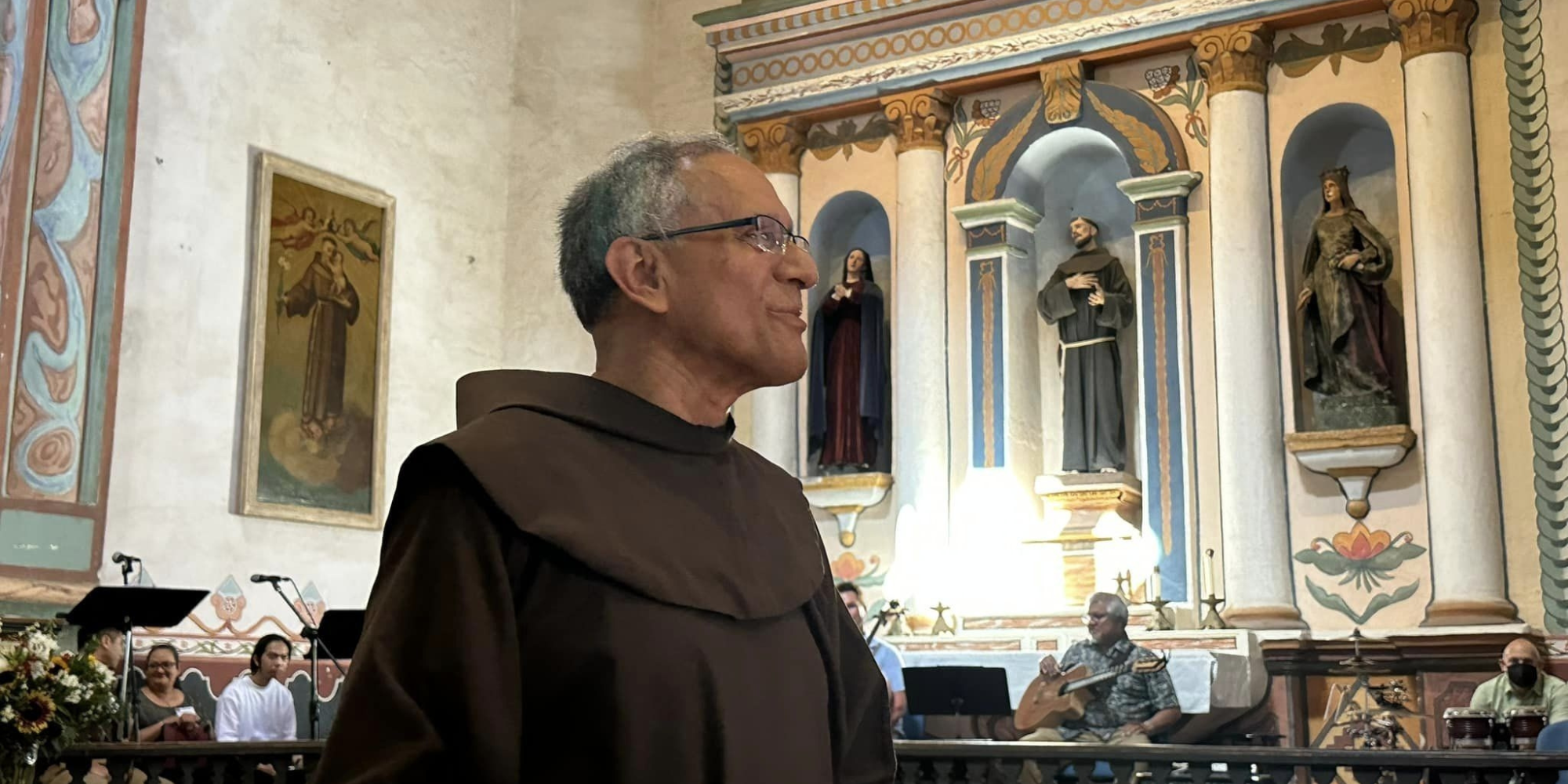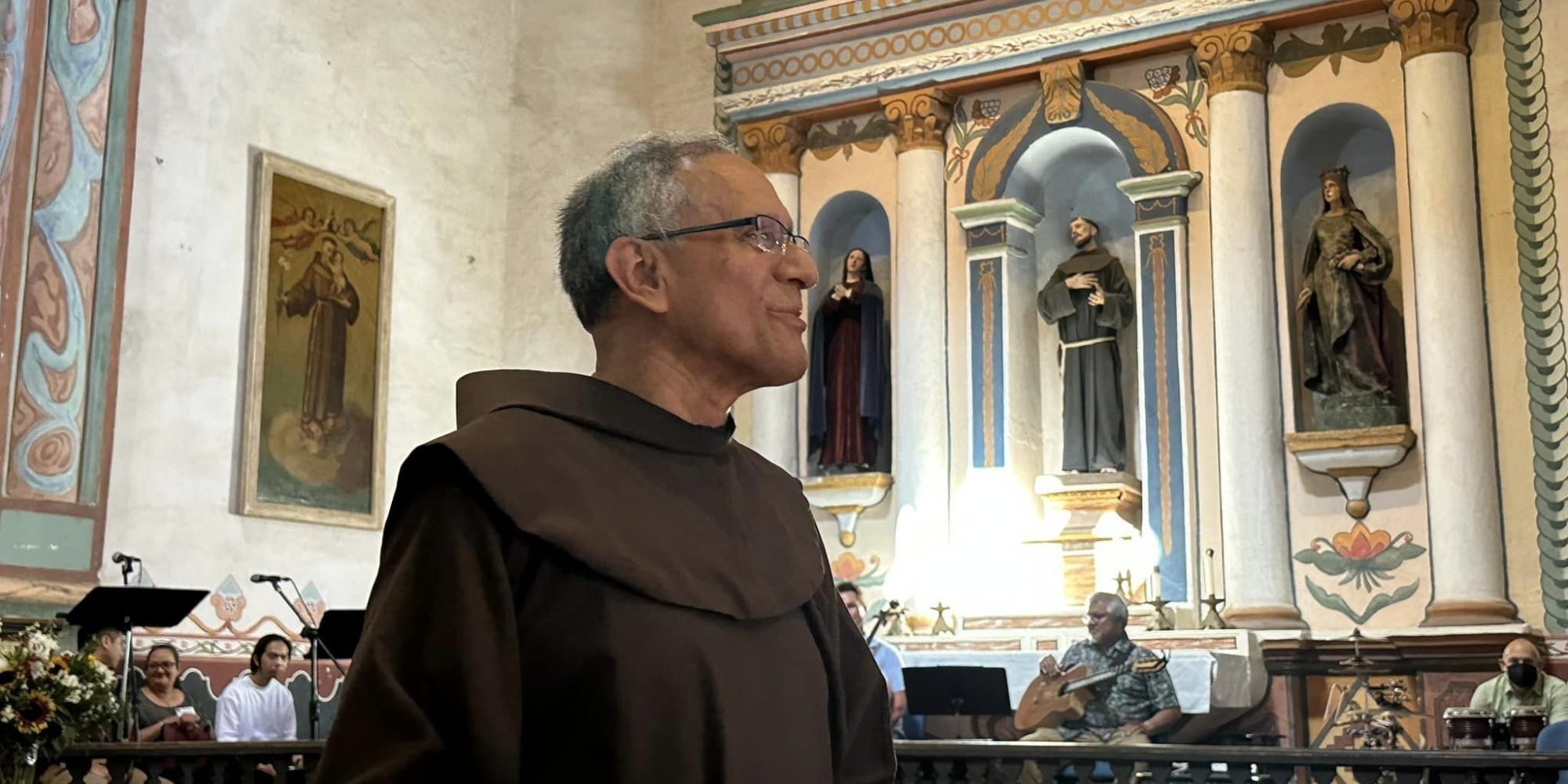Friar connects the Church through multicultural liturgies
Date Published: March 28, 2025
By Eli Pacheco
When a community hosts a spectrum of cultures, many churches host separate Masses for different language groups. This is a gracious arrangement but can prevent groups from coming together.
Often, it is a latchkey relationship: one group meets for prayer and fellowship. Then they turn out the lights, lock up and leave the keys for the next group.
Br. Rufino Zaragoza, OFM, wants to unify different faith practices through music and liturgy, bridging cultural differences in church settings.
He turned to musician and liturgist colleagues to create a more enriching experience for diverse congregation groups so that they can worship together.
“We realized we needed to learn more than just music and liturgy,” he said. “We didn’t even know the term for it. We needed intercultural competence.
“How do I bring together, for a feast day at a trilingual parish, members of a Vietnamese choir, a Spanish-speaking Latino choir and the Euro-Americans? How do I run a choir rehearsal with people of three different cultural backgrounds?”

One challenge for ministers with master’s degrees is the difficulty in stopping to sit with people and ask, ‘Teach me about your culture, how do you do this song, teach me how to pronounce that,’” Br. Rufino said. His ministry concentrates on intercultural religion, integrating diverse perspectives into Franciscan practice. (Photo courtesy of Br. Rufino Zaragoza, OFM)
Hospitality to immigrants
Br. Rufino’s work in intercultural liturgies began when Fr. Hung, a Capuchin friar, called Br. Rufino, well-known for his musical aptitude, to create a program for his ordination at St. Boniface, a Franciscan parish in San Francisco.
“I said, ‘Hung, I know nothing,’” Br. Rufino recalls. “I don't speak Vietnamese. I don't know Vietnamese music. I don't even know where Vietnam is on a map. How could I help you?’”
Br. Rufino connected with a Vietnamese choir to learn how to create a bilingual program. He found that although Vietnamese people had been in the community for at least 20 years, there were no intercultural liturgies.
“How do we offer hospitality to immigrants – not just give them a place to have their Mass?” he asked. “What is their gift to Catholicism, to give to us, and what do we give back to them? Why are we not mutually enriching each other as a family of God?”
Br. Rufino wrote it down in a song. Or rather, a songbook. “Chung Lời Tán Tụng/United in Faith & Song” – the first Catholic tool of its kind – was born, offering a blueprint for multi-cultural churches to share faith, not just space.
Research, translation and edits occurred first. To begin, he sat in on Vietnamese Masses to listen and observe.
“I heard these gorgeous melodies when I attended Mass,” he said. “I had no idea what the song was about.”
Br. Rufino requested translations of Vietnamese songs. That's when, he said, the Spirit stepped in.
“Let's do the reverse,” Br. Rufino said. “Let's offer a Vietnamese song that has some English lyrics. During Mass, you could do a communion or offertory song. The refrain is in Vietnamese, but people will hear English, so they know what's going on.”
Broadening the Franciscan perspective
During their recent Franciscan Provincial Synod, the Franciscan Friars of the Province of Our Lady of Guadalupe committed themselves to fostering racial and cultural inclusion. Following in the example of their founder, St. Francis of Assisi, the friars strive to be brothers to everyone and all of creation.
Friars like Br. Rufino aim to honor and respect diverse cultures, learn from them, and empower them to share their gifts with the Church. He urges other ministers to listen to people from different cultural backgrounds.
“One challenge for ministers with master’s degrees is the difficulty in stopping to sit with people and ask, ‘teach me about your culture, how do you do this song, teach me how to pronounce that,’” Br. Rufino said.
His ministry has evolved from curiosity to a profound exploration of how the Church fosters interracial and interfaith marriages. It's not just about tolerance but a proper recognition and celebration of the fusion of faith, race and culture.
Imagine a couple from different backgrounds finding a service in multiple languages, empowering their families to deepen their faith. Br. Rufino envisions the Church as a home where such couples feel welcomed and understood.
It is the fertile soil in which true integration grows.
“A groom might say, ‘Maybe I’ll go to Mass with my bride,’” he said. “That's the potential.”
(Br. Rufino confesses that he is not the most active promoter of his work. A friend created a YouTube channel for him where you can listen to his work.)

